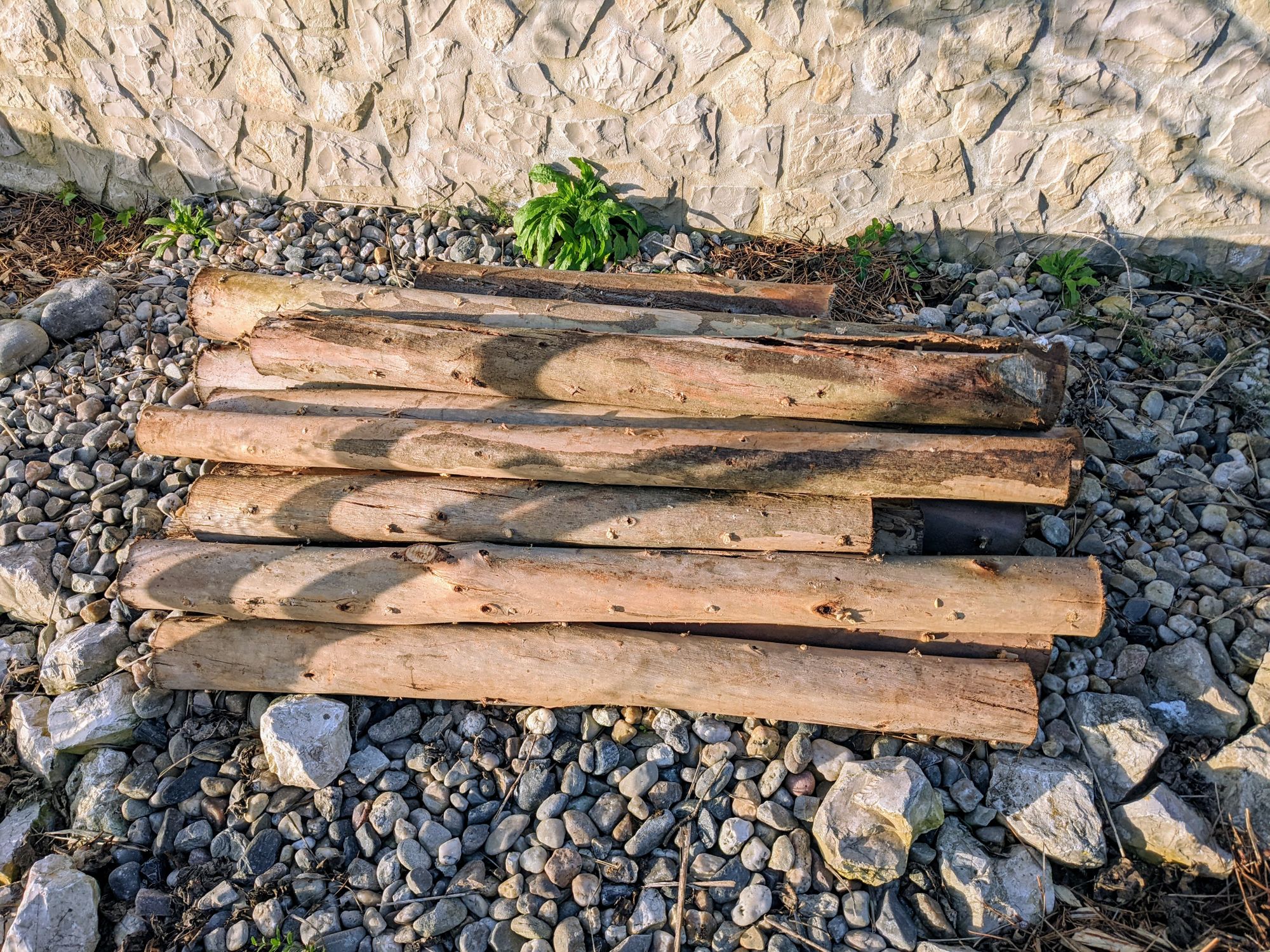Sometimes you discover a topic, get interested, and dive right in. You pick a project, gather supplies, and quickly do an impressive job for what is the first attempt in an unknown field.
This post is not about one of those occasions.
During the last two years, both of us read several books about mushrooms that got us excited about the topic (most notably Entangled Life and Mycelium running). Mushrooms seem like an integral part of what we’re trying to do, so we planned to cultivate some to supplement the wild ones from the garden.

We gathered supplies:
- Garden giant (Stropharia rugosoannulata) grain spawn
- Shiitake “Donko” (Lentinula edodes) and Nameko (Pholiota nameko) plug spawn
- Shredded pine branches from the large pile we got for mulching the trees, to use for the grain spawn
- Eucalyptus logs from cleaning the forest, to use for the plug spawn
- Beeswax for sealing log inoculation holes
The spawn arrived and got stored in the fridge. It took a while to get started, but we eventually made a Garden giant patch from two layers of the grain spawn sandwiched between layers of shredded pine.

The setup is not ideal:
- The spot should be shaded by the tree (good), but it’s also in a windy spot (not so good)
- I’m not sure if the shredded pine branches – including a lot of needles – will be as good food as the hardwood chips people seem to typically use
- Grain spawn is risky to use unprotected outdoors, because bugs and field mice (of which there are a few running around) can dig it up and eat it.
We’ll see what happens in the next 6 months to a year. If successful, we’ll use the mycelium to seed more patches around the garden.
And then… nothing. Planting all the trees was hectic, and there was always something else to do. The eucalyptus logs were cut in July and weren’t getting any fresher. In fact, something seems to have eaten a layer of wood around some of them, making ticking noises as it did so.
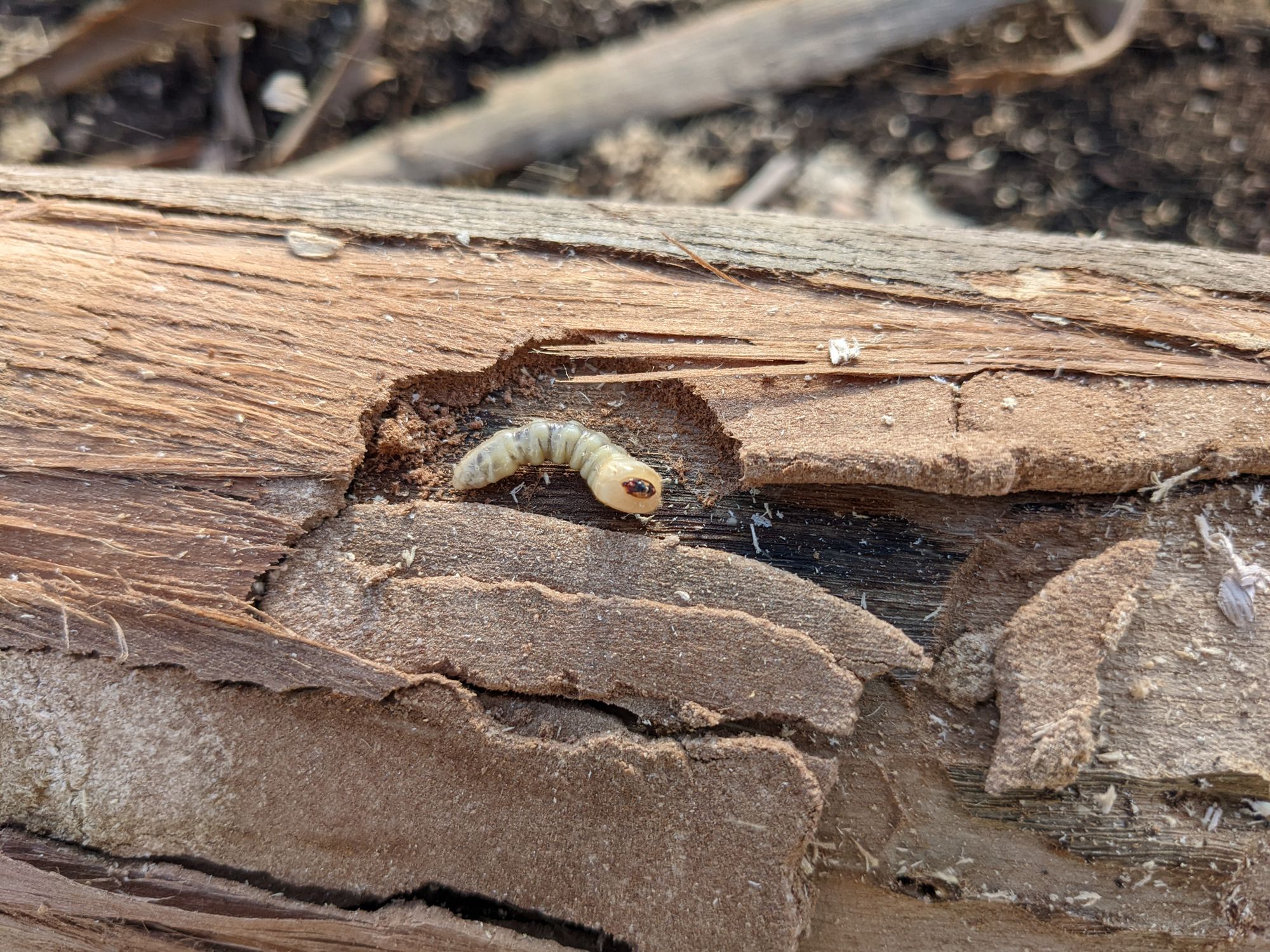
The Nameko plug spawn expired on December 1, but I only got started with the log inoculation on December 18. It felt way too difficult to drill the holes, until I realized that the 8mm drill bit I was using was very dull. Not wanting to wait for a replacement I used a 7mm instead. That was faster, but caused problems when trying to hammer in the plugs – most of them only went halfway in.
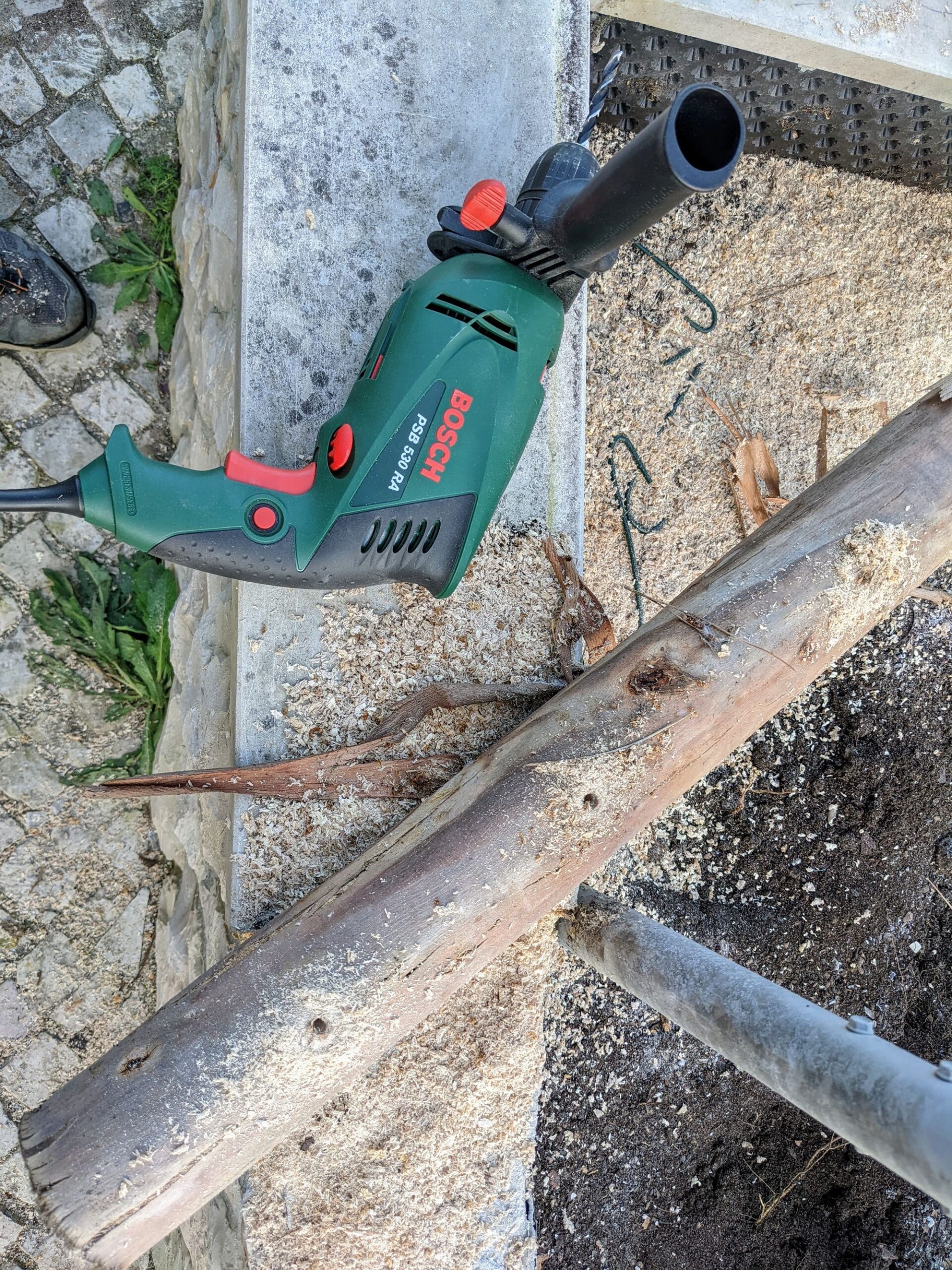


Having not finished that day, the project went on hold yet again. The bag of Shiitake plugs – no longer airtight – went back in the fridge. After buying a sharp 8mm drill bit and procrastinating some more, I resumed on January 7.
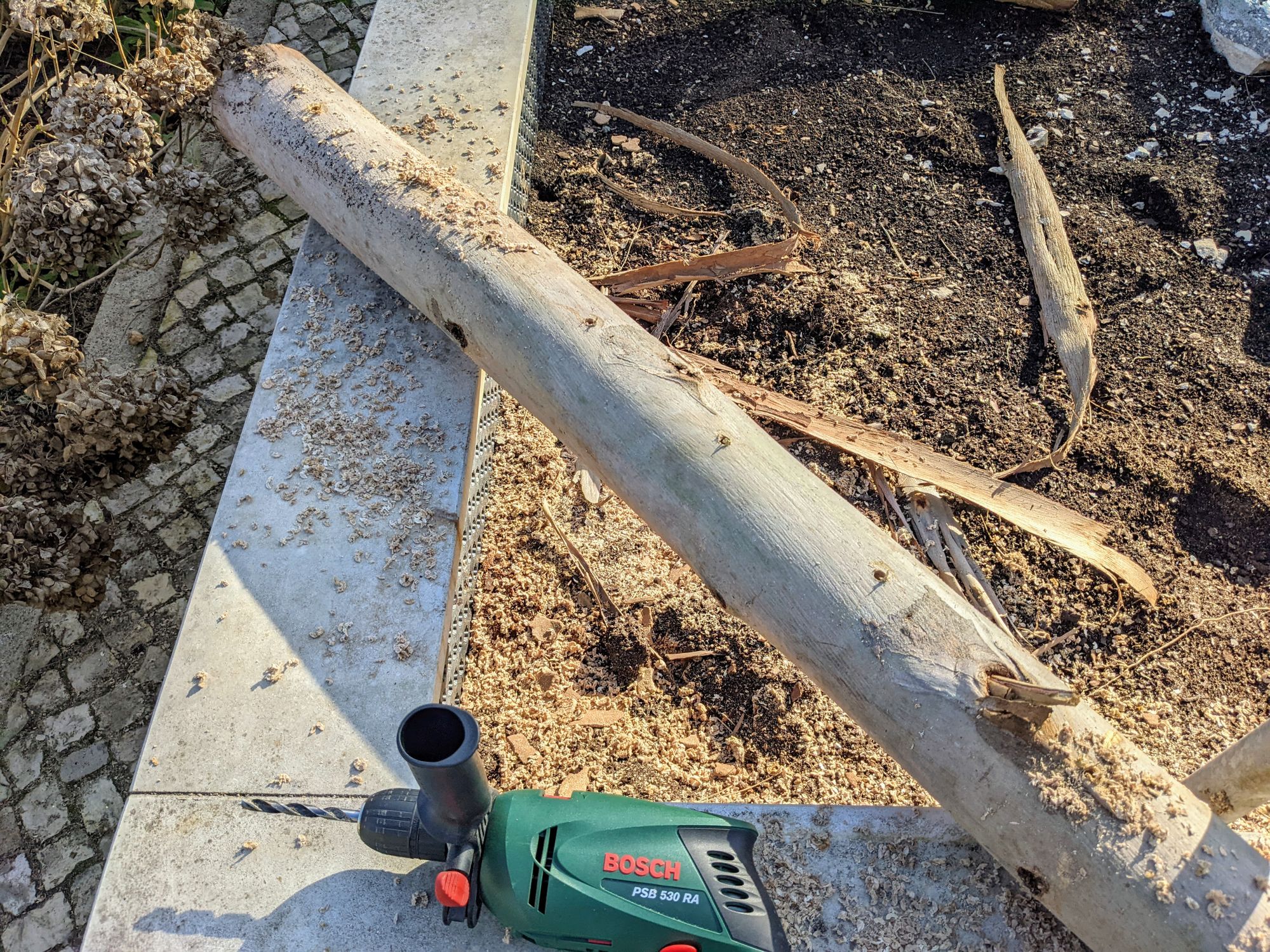
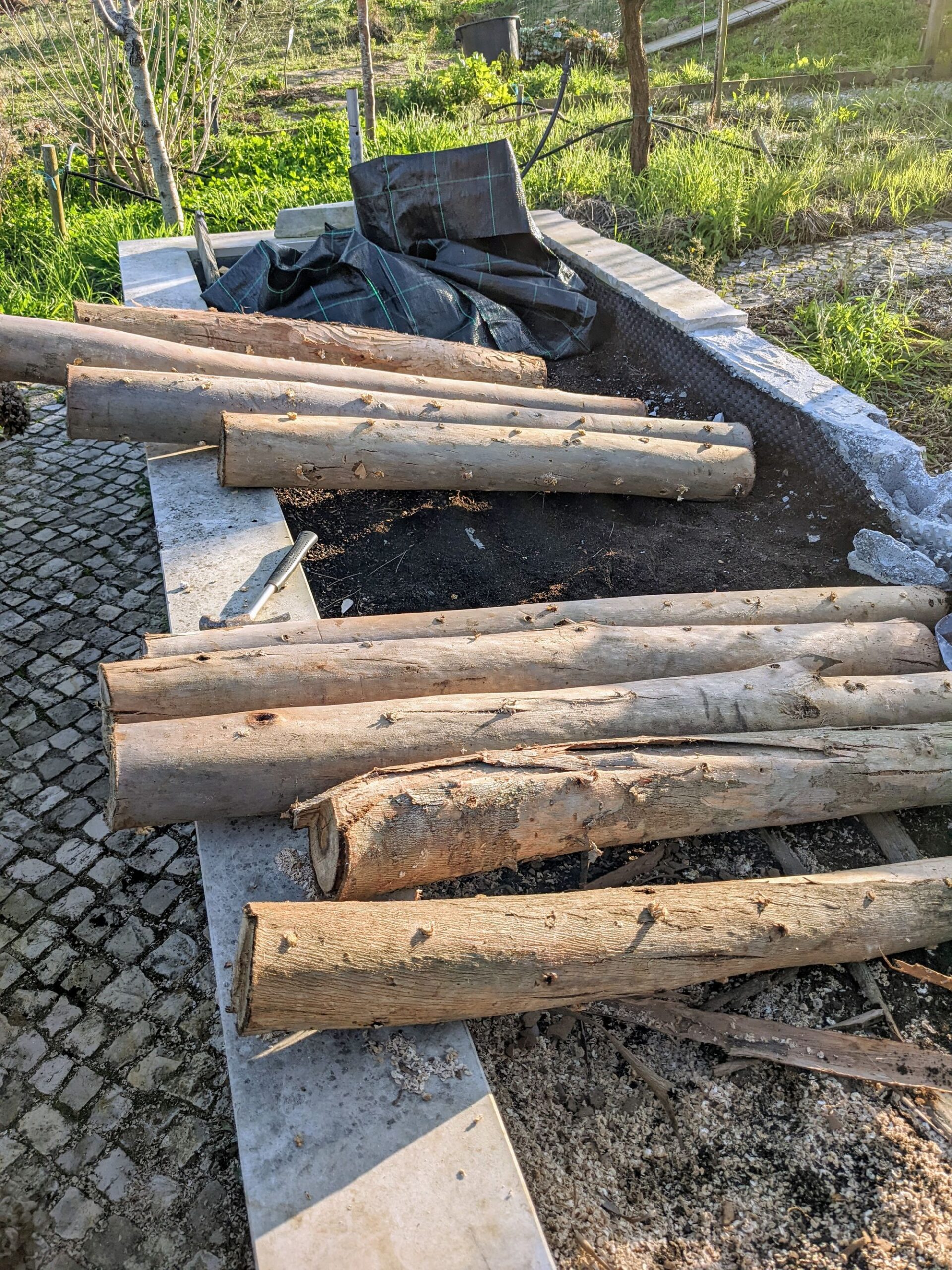
By now, the Shiitake plugs had a suspicious looking fuzzy white growth on top. While clearly mycelium, it’s not clear at all if it was Shiitake or something else. The Nameko plugs were wet and slimy and long expired. I hammered them all in anyway.
To recap:
- The first round of Shiitake plugs only partially went into the holes, then spent almost a month unprotected in the rain
- The second round of Shiitake plugs were likely contaminated with something
- The Nameko plugs were long expired
Feeling lazy and discouraged by all this, I skipped the wax sealing step. If the logs get inoculated and edible mushrooms grow, yay. If not, oh well. We’ll try again either way.
Things we’ll do differently in the future:
- For mushroom beds, either use a different type of spawn or put the grain spawn in burlap sacks to protect against critters
- Cut and prepare the logs right before there’s time to actually inoculate them
- Verify that all tools and supplies are in working order before starting
- Pay attention to the ergonomics of the working area: drilling and hammering all those logs was uncomfortable
- Seal all holes with wax right after inoculation
